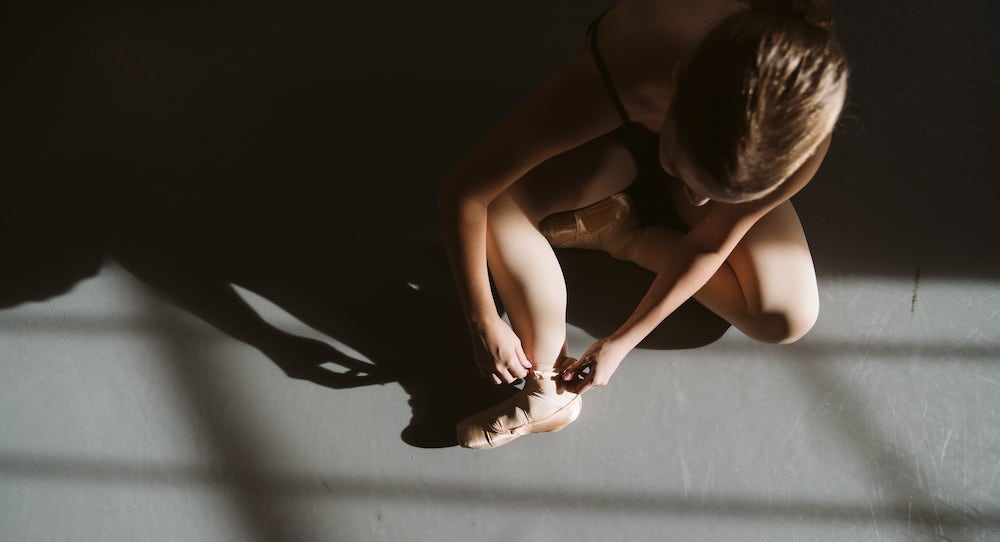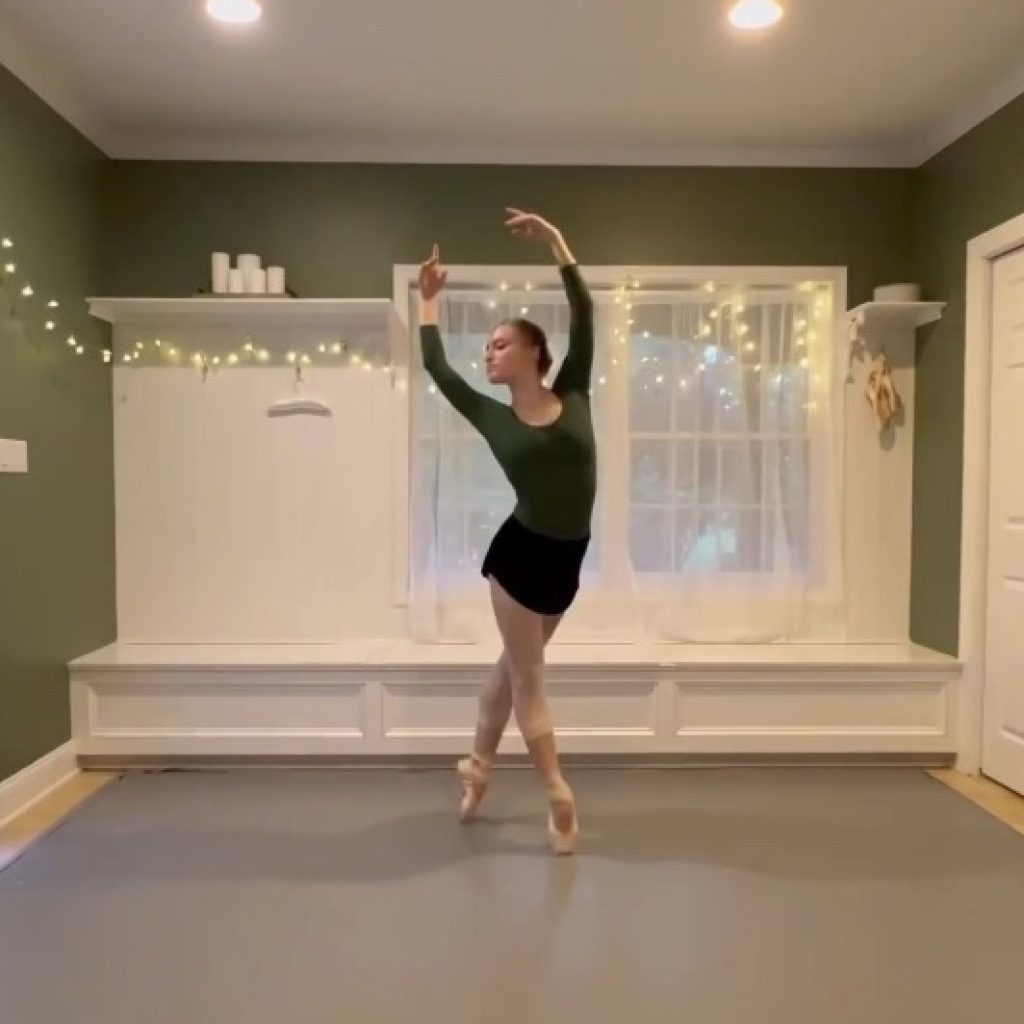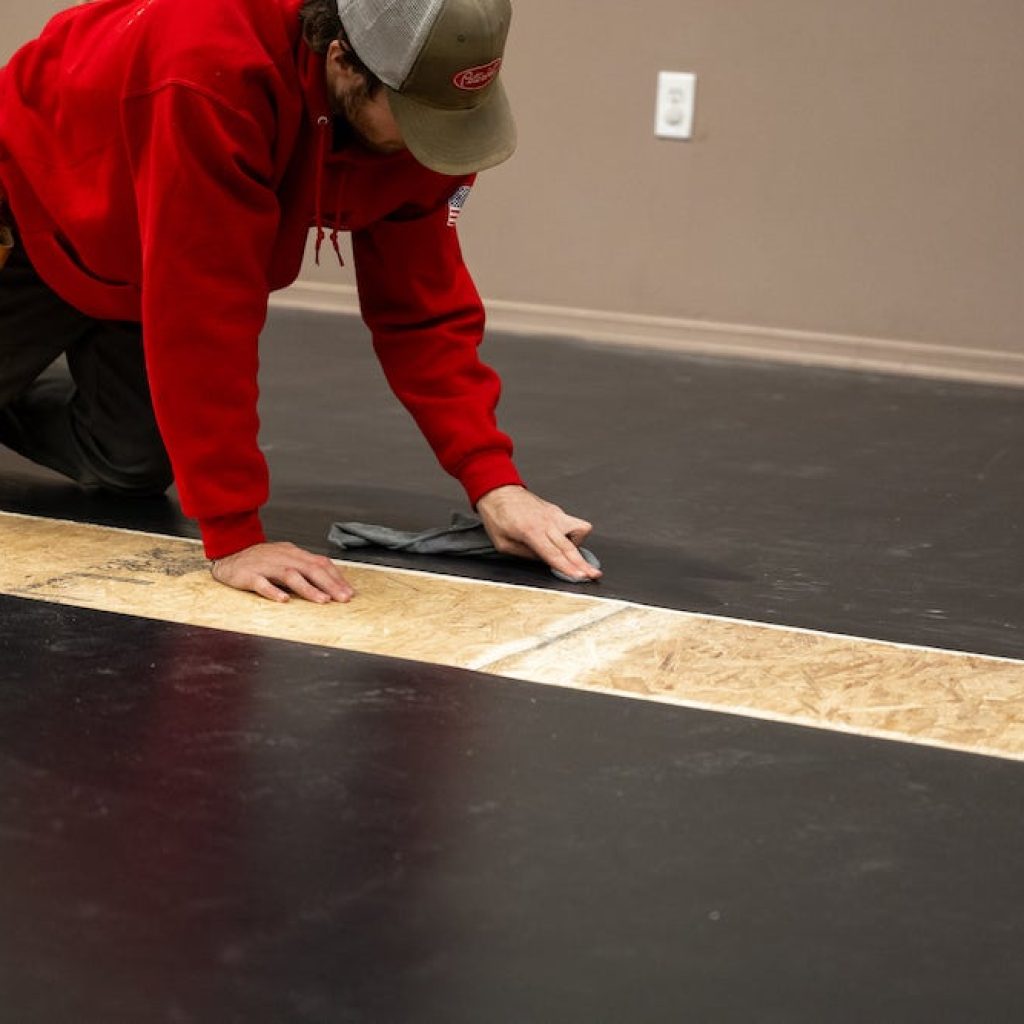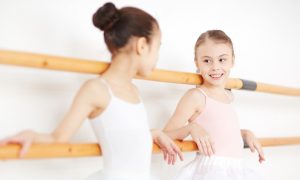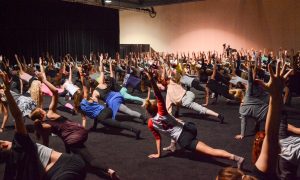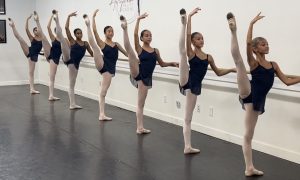Sprung floors, interlocking boards, precise measurements, oh my! Setting up a home studio can be full of stress and uncertainty. It’s a notable investment – financially, in time spent and in home space devoted. It is important to do it right. Yet, with proper knowledge and preparation, it’s entirely possible to do just that. Dancers can then have a dedicated personal space for training, rehearsing and more – and see their artistry elevate from there.
In service of sharing that knowledge and facilitating that preparation, Dance Informa speaks with Karen Flanagan and Daniel Kennedy with Stagestep, as well as Krista and Michelle Quiner of Quiner Sisters fame (their mother and one of the sisters themselves).
In this first of a two-part series, we’ll look at important pre-installation steps as well as best practices for the installation itself. In a following article, we’ll consider how (and why it’s important) to care for the home studio after installation. We’ll also consider the “why” of it all, how a home studio can be a game changer in one’s dance training. Let’s dive right in!
First steps: Choose your space, floor and more.
Kennedy points to an important first question when it comes to setting up a home studio: does the student show potential, and are they truly invested enough to make the whole process (and cost) worth it? He notes that Stagestep does offer a variety of 8×12 portable floors, as another option, if there’s a chance that the young dancer will move on to a team sport – or other extracurricular – after dancing for a year. That allows for a simpler process and reduced cost.
Door #1: A home studio seems like a worthwhile option…great! A next key question is where in the home to install it. Any room that works for the family at hand is just fine – even a garage. Yet, Flanagan says that the room must have heating and cooling, because a comfortable indoor temperature is necessary to ensure that the floor doesn’t expand or contract.
Do also note what the “subfloor” (the existing floor) is in the room of choice. “We can walk you through the process, and be totally adaptable…but we do need to know what the subfloor is,” Flanagan explains.
Then it’s time to order. Flanagan suggests consulting the dancer’s teacher(s) on what floor is installed in their studio, and then ordering the same (or at least something similar). “Students will say that they don’t like their home floor if it’s different, that they’re not used to it.”
It’s also important to keep in mind the style or styles in which the student trains, she adds. That’ll determine things like the level of smoothness and foam grab that will be best for the dancer. There are also extras like mirrors and barres. Flanagan notes that the Stagestep website breaks down which styles of dance training benefit from these add-ons. “It’s really based on the child and their needs.”
Krista Quiner offers a great example of how all of this works, when their family installed their home studio. She recommends first browsing the Stagestep website to see what they have on sale for home studio set-ups. Next is to call the company “for expert guidance and to answer any questions you may have. Safety is important, and Stagestep’s flooring experts can help make sure you get the right flooring for your home!”
When choosing where in their home they’d install the studio, the Quiners chose a tile entryway to their basement, rather than a “big” space. “I think the best option is to use a room with a hard surface. Stagestep has a special floor with padding that can work well on tile and harder surfaces,” Krista notes.
Yet, Michelle Quiner highlights the importance of enough space, to “have enough room to move around so you can practice correctly.” Michelle also notes the importance of a Marley floor if the dancer(s) will be jumping/leaping, for muscle and joint safety (in other words, injury prevention). “We use a padded Marley floor from Stagestep.”
Installation time!
Yes, home studio installation may seem like a daunting task – and it certainly is no small feat. Yet, it may be more straightforward than you think! “I thought it would be more challenging than it was!” says Krista. “The floor arrived very quickly. We unrolled it and taped it in place. And then it was ready to use! It was not a long or complicated process.”
Krista advises accurate measurement of the intended space, as well as using the proper tape to secure it. The Quiners got theirs directly from Stagestep. Flanagan notes that the flooring also comes with an installation instruction manual. “Make sure to read it carefully, and recruit help [from Stagestep personnel] if you need it.”
Kennedy cautions against taking shortcuts, because in the long run they “won’t be shortcuts.” For example, one may be tempted to use any type of screw that’s available, but the installation does require a specific type of screw. “It’s important for the safety of the dancer,” he affirms.
All along the way, Stagestep is there to assist. “Parents mostly leave the dance expertise to the teachers, and we know it’ll likely be the same with home studio set-up,” Flanagan says. “They rely on us to know what they need. We try to put it all in layman’s terms, take it step-by-step, and also try to work within your budget.”
She notes how Stagestep has developed a “niche” from working with customers in this sort of personalized way, more so than many of their competitors. For example, dancers can come into one of their locations and try out a certain floor before the family purchases anything. Kennedy, in agreement, assures that Stagestep will “work with you to make you comfortable and get what you need. There’s no job too big or too small.”
Stay tuned for Part 2!
For more information, visit stagestep.com.
By Kathryn Boland of Dance Informa.
Sponsored content.


